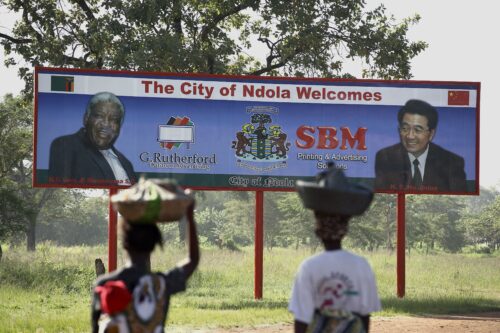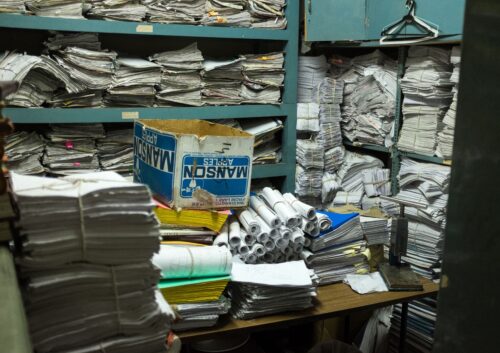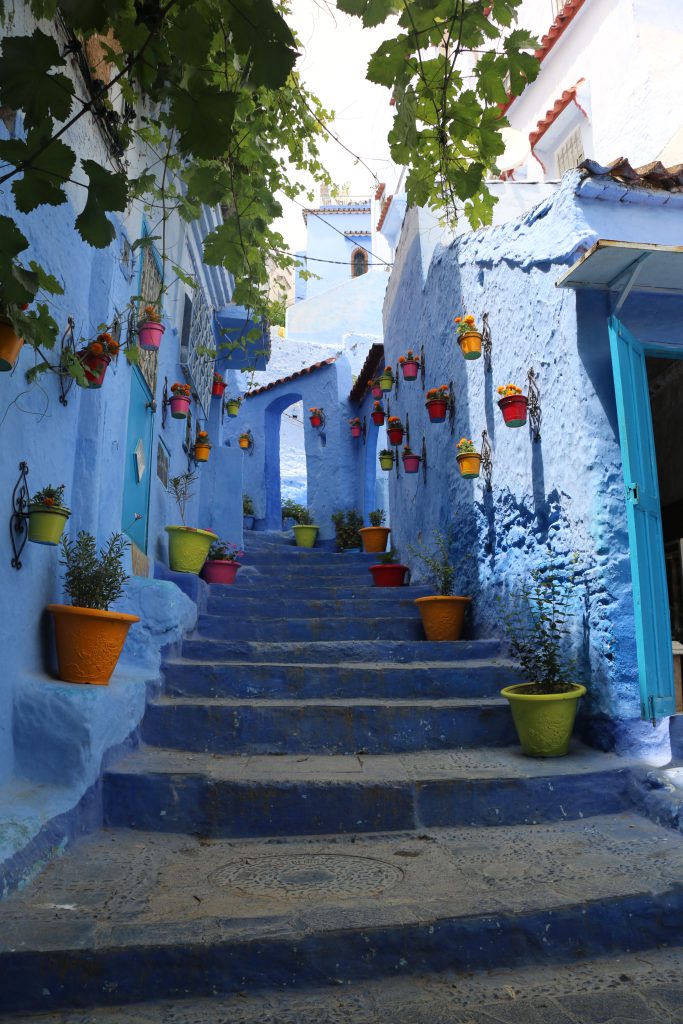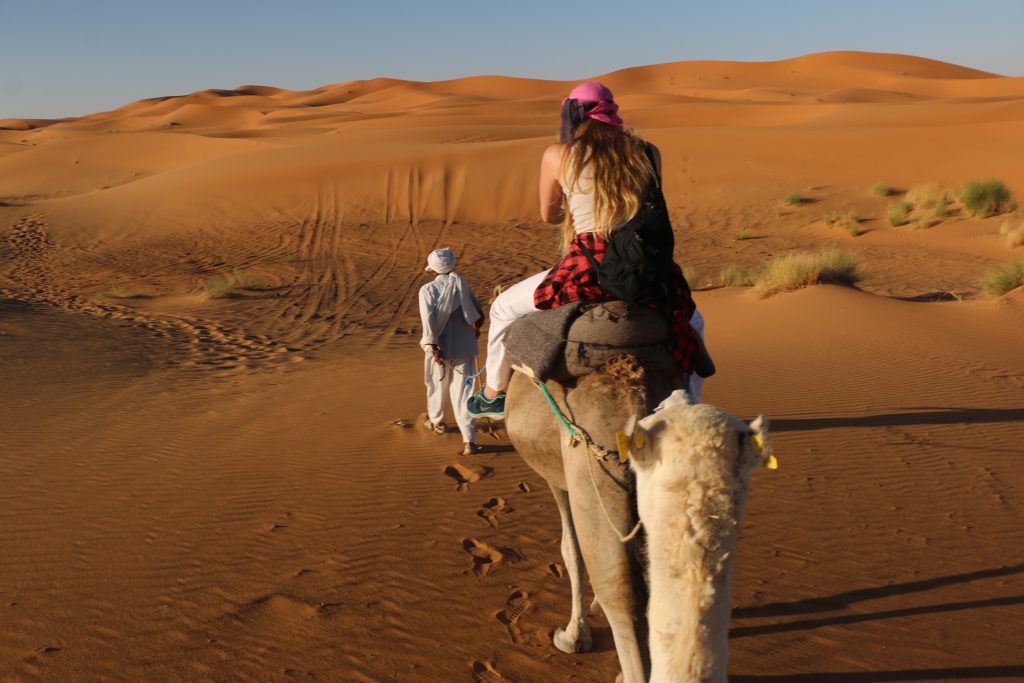Inside a Moroccan Marijuana Farm
With my gaze fixed on the horizon, I stood at the bow of a ferry that carried me across the Strait of Gibraltar. One by one, the peaks of Morocco’s Rif Mountains emerged from the haze, and I caught my first glimpse of Africa. It was a humid June day in 2015, and I was on a backpacking trip through Spain, Morocco, and Portugal, during which I spent two weeks in each country. The ferry docked at Ceuta, and after six more hours traveling on foot, in a taxi, and on a bus, I arrived in Chefchaouen—a city in the Rif Mountains that is known for its beautifully painted blue medina and laid-back atmosphere.
Since I am a freelance video journalist and an aspiring anthropologist, I had my Canon DSLR camera and a blank journal to document anything interesting I saw along the way. But this being my first time in Morocco, I didn’t yet know how to recognize a street-level con artist. The second day of my stay, I got more than I bargained for and found myself on a tour of a mountainside marijuana farm. I had stumbled upon a brand of tourism as illegal as it is common.
Two of Morocco’s largest industries—tourism and agriculture—intersect to create a thriving underground attraction that draws backpackers and visitors from around the world. In 2014, travel and tourism accounted for roughly 18 percent of the country’s gross domestic product, 1.7 million jobs, and some 10.3 million international tourists. In the same year, agriculture was responsible for around 13 percent of the country’s GDP.
But the black-market production and export of marijuana and its derivatives remains unofficial and thus unaccounted for, even though it significantly impacts the economy and drives some portion of the tourist industry. The most well-known marijuana export is the product known as hash, which is made by first separating THC crystals (or trichomes), the active ingredient in marijuana, from the plant. This process produces a fine powder called kif, which is compressed into a dense, potent substance to become hash. Moroccan hash makes up about 80 percent of Europe’s supply, and nearly all of it is produced in the country’s northwest region—in the Rif Mountains, where I took my tour.
Among marijuana enthusiasts, Moroccan hash has a reputation for being world class and readily available. As a result, it draws travelers to the region—this, in turn, has created abundant business opportunities. But the economic benefits of informal marijuana tours are also missing from official reports; however, like marijuana exports, these tours provide a critical source of income for Morocco’s rural poor.
But while most types of informal tours involve harmless interactions with guides, some travelers who have joined marijuana tours have found themselves victims of blatant extortion that leads to exorbitant demands for payment. In my case, after some tense negotiations with the guide, I ended up paying only 150 Moroccan dirhams (US$15) for the tour.
The main difference between formal tours and informal marijuana tours—aside from legality—is what’s for sale: an experience or a product. Desert excursions in the southern region are an example of a formal tour that sells an experience—one that allows tourists to engage with the culture of the Amazigh, an Indigenous group in the region. The main attractions are camel rides, desert camping, musical performances, and tajine, a meat and vegetable stew cooked in conical clay pots of the same name. On the other hand, tours in the Rif Mountains, where the Amazigh also live, are often focused on the product—in this case, kif. When it’s not made into hash, kif is traditionally smoked in a long, thin pipe, or, more commonly among tourists and younger Moroccans, the powder is added to tobacco and rolled into cigarettes. The kif that travelers buy is the whole point of the tour; it’s not about celebrating or experiencing cultural traditions per se. I learned this the hard way when the tour guide demanded that I purchase kif, which I refused to do—thus our tense negotiations to settle on a price for just the experience.
Both formal and informal tours of all types will likely continue in Morocco, but marijuana’s status as an illegal drug could change, which would bring much-needed security to marijuana growers in the Rif Mountains. Historically, when the region was part of the Spanish protectorate, the production of marijuana was allowed, but large-scale sales were not endorsed. But in 2004, cultivation was officially banned in response to pressure from the U.S. and the European Union. In recent years, the idea of legalizing marijuana in Morocco—at least for industrial and medical purposes—has garnered attention from some government officials, but for now, it still remains illegal. Marijuana producers and their families continue to live on the margins of society, fearing random raids, seizures, and detentions. With few viable economic alternatives, they remain financially and legally vulnerable—a topic of interest to anthropologists whose research centers on how drug laws reproduce social inequalities.
Read more from the archives: “An Archaeology of Marijuana.”
My informal tour started when a local guide offered to take me and three other backpackers to a popular tourist spot, a scenic overlook on the outskirts of the city. As far as I knew, I was embarking on a half-day hike and would be back in time for dinner. About 20 minutes into the trek, I noticed our path was not heading up the mountain—our route had changed. I had been duped into joining an underground marijuana tour.
Luckily, I was able to make the best of the situation and, with permission, film the “how-to style” performance of creating kif in seven easy steps. We eventually left the farm and arrived at the scenic overlook, an abandoned Spanish-era mosque perched above the blue-and-white patchwork of Chefchaouen. On this day, in addition to discovering how to make kif, I learned several valuable lessons about traveling in Morocco—tours are never free, hustlers are everywhere, and prices are always negotiated. After I paid the guide, the tour that gave me an insider’s view of one of Morocco’s most popular underground industries came to a close.



























